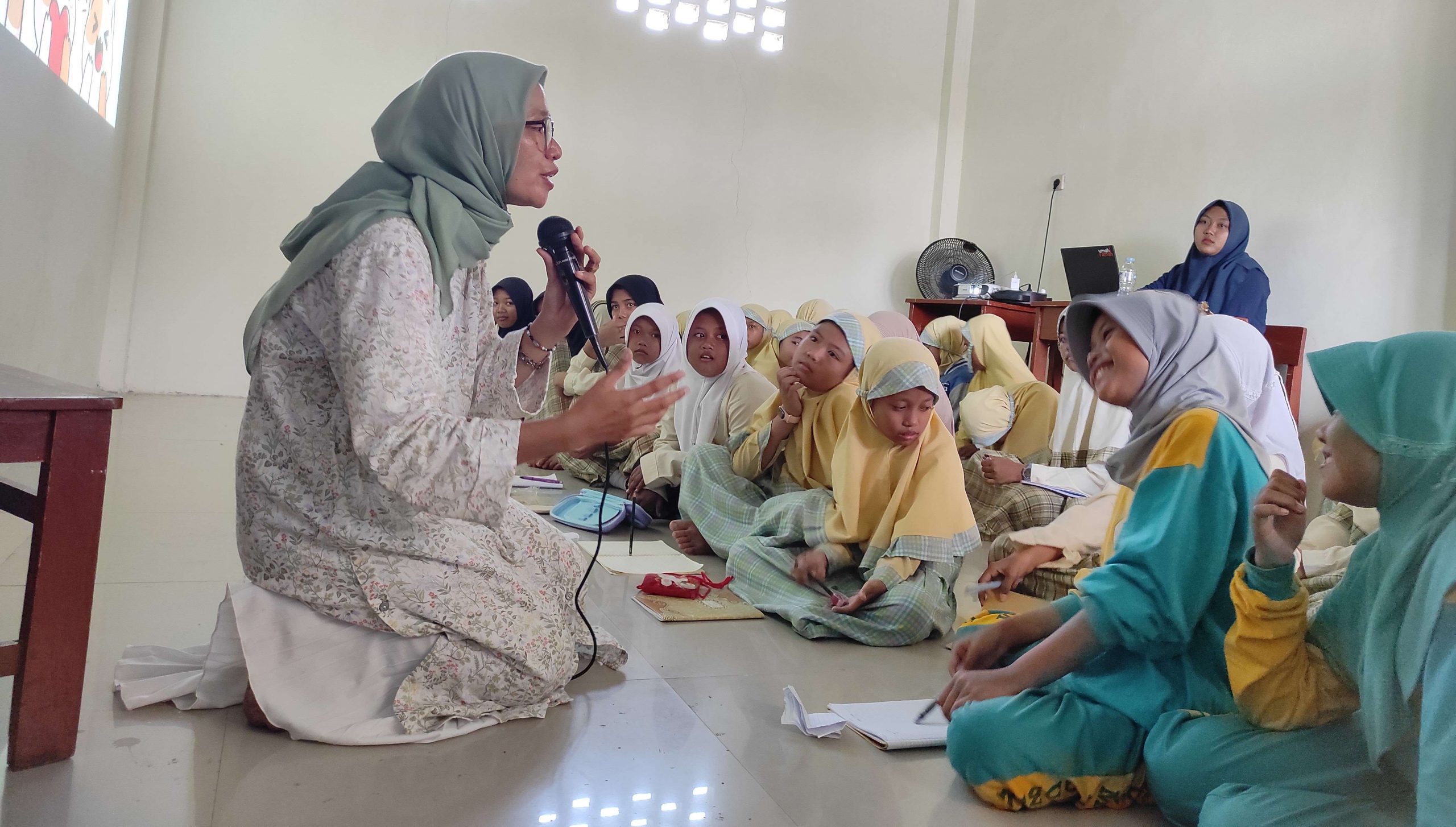Reporter: Napol Riel
On Tuesday (20/08) Umah Ramah team went to SDIT (Integrated Islamic Elementary School) Lema Duwur Arjawinangun, Cirebon Regency, to support students learning together. That morning, at 10 a.m., after break time, around 100 students from grades 4, 5, and 6 had gathered separately between male and female students in two classrooms that had been provided. There were about seventy students in the male class, along with Prasetyo Aditya, Ahmad Hadid, and Napol Riel. While Asih Widiyowati, Mahirotus Sofa, and Nur Anisa led about thirty students in the female class.
Khaerunnisa, the Principal at SDIT Lema Duwur, expressed her concern regarding the frequent incidents of violence that occur in schools. “I believe that early education about violence, especially sexual violence, is important for children. It has happened here multiple times, which is why we teachers are worried. It’s good that the kids may inform their teachers about the violence they witnessed or experienced in order to address violence right away, and end it before it gets worse,” she told the Umah Ramah team in her office.
Introduction to the dangers of violence (bullying) and body awareness became the initial foundation for Umah Ramah team to support students in learning. A brief icebreaker game was played before the gathering got underway with a hearty welcoming. Adit beatboxed as the male students in the class sang the song “17 Agustus” together. The mood warmed up, the students looked enthusiastic.
The Umah Ramah team started by asking the students a few basic questions, such as what bullying is, what forms it takes, and if they have ever experienced and/or bullied their friends. Nearly all of the students raised their hands.
“You already know, and most of you have experienced it, yes. Bullying is any action that hurts our friends. So it is violence. There are several forms of it, namely verbal bullying, physical bullying, relational bullying and cyber-bullying,” Adit explained along with the forms based on the students’ answers.
“You already know and the majority of you have dealt with it, right? Any act that harms our friends is considered bullying. So it is violence. There are several forms of it: verbal bullying, physical bullying, relational bullying and cyber-bullying,” Adit provided explanations of each type based on the students’ responses.
“Bullying also includes body shaming. Teasing your friend’s physical appearance, such as calling them small, fat, or flat-nosed, is also considered violence against the body. Body shaming is included in the form of sexual violence,” said Asih to the students who were sitting neatly while taking notes.
The students were also asked what impacts were caused by bullying. “Depression. Lack of self-confidence. Embarrassed to go to school. Suicide. Sad. Afraid.” They answered loudly.
Hadid added, “In addition, bullying can also trigger revenge. The friend who is hurt can hold a grudge and take revenge. This could be harmful. So don’t bully. Avoid retaliating as much as possible if we are being bullied because the other person may do worse. Let the violence stop with us. If you are bullied, it is better to report it directly to the teacher, okay?”
After listening and discussing, the students competed to ask questions. A student asked if there were limits to bullying. Asih emphasized that there are no limits to violence. Anything we know will hurt a friend is bullying. If we experience it, don’t stay silent. Report or tell your teacher or your parents to prevent the violence from getting worse to the point of taking lives.
A number of endearing situations were seen in between the group’s learning process. When a girl unintentionally smacked her friend on the body, she immediately apologized, and her friend welcomed her. There was also a student who was seen approaching her friend and then extending her hand. She said, “I teased you at that time. I am sorry.”
Asih says that the concern and sensitivity of educators about the dangers of violence that lurk among children is a good start for preventive measures. One of them is through socialization. Introductions to the dangers of bullying and body awareness for elementary school students will be continued in next meetings. []
